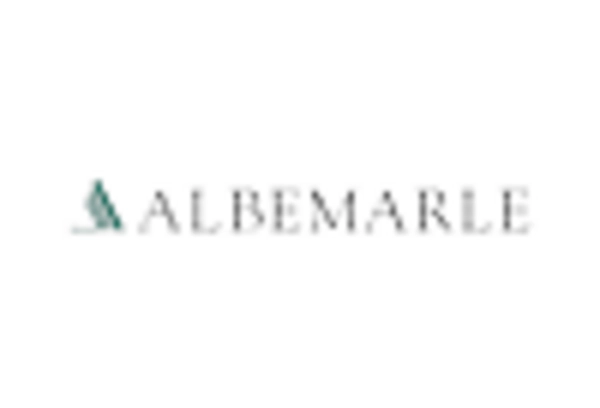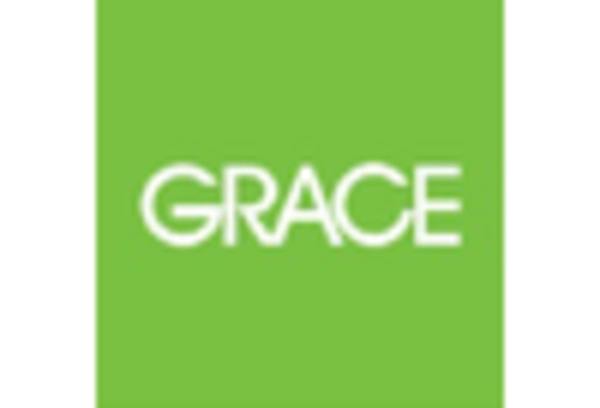Growth in Environmental Regulations
The Inorganic Nano Porous Adsorbent Market is significantly influenced by the tightening of environmental regulations across various sectors. Governments are increasingly implementing stringent policies aimed at reducing pollution and promoting sustainable practices. This regulatory landscape compels industries to adopt advanced materials that can effectively mitigate environmental impact. Inorganic nano porous adsorbents, with their superior adsorption capabilities, are well-positioned to meet these regulatory demands. For instance, the chemical industry is expected to see a rise in the adoption of these materials as they strive to comply with new emission standards. The market for inorganic nano porous adsorbents is likely to expand as companies seek to enhance their environmental compliance and sustainability efforts.
Rising Demand for Water Purification
The Inorganic Nano Porous Adsorbent Market is experiencing a surge in demand due to the increasing need for effective water purification solutions. As water scarcity becomes a pressing issue, industries and municipalities are seeking advanced materials that can efficiently remove contaminants. Inorganic nano porous adsorbents, known for their high surface area and selective adsorption properties, are being adopted in various water treatment applications. Recent data indicates that the water treatment sector is projected to grow at a compound annual growth rate of approximately 7.5% over the next five years, further driving the demand for these innovative materials. This trend underscores the critical role that inorganic nano porous adsorbents play in addressing global water quality challenges.
Expanding Applications in Gas Separation
The Inorganic Nano Porous Adsorbent Market is experiencing growth due to the expanding applications of these materials in gas separation processes. Industries such as petrochemicals and natural gas are increasingly utilizing inorganic nano porous adsorbents for their ability to selectively adsorb specific gases. This capability is crucial for enhancing efficiency and reducing costs in gas processing operations. Recent studies suggest that the gas separation market is anticipated to grow at a rate of 5% per year, with inorganic nano porous adsorbents playing a pivotal role in this expansion. As the demand for cleaner energy solutions rises, the adoption of these advanced materials in gas separation applications is likely to increase.
Increased Focus on Energy Storage Solutions
The Inorganic Nano Porous Adsorbent Market is also being driven by the growing emphasis on energy storage solutions. With the rise of renewable energy sources, there is a pressing need for efficient energy storage systems. Inorganic nano porous adsorbents are being explored for their potential in enhancing the performance of energy storage devices, such as batteries and supercapacitors. Their unique properties allow for improved ion transport and energy density, which are critical for the development of next-generation energy storage technologies. The energy storage market is projected to grow significantly, potentially reaching a value of over 200 billion dollars by 2030, thereby creating substantial opportunities for the inorganic nano porous adsorbent market.
Technological Innovations in Material Science
The Inorganic Nano Porous Adsorbent Market is benefiting from rapid technological advancements in material science. Innovations in synthesis techniques, such as sol-gel processes and hydrothermal methods, are enabling the production of highly efficient nano porous adsorbents with tailored properties. These advancements not only enhance the performance of the adsorbents but also reduce production costs, making them more accessible to various industries. The market is projected to witness a growth rate of around 6% annually, driven by these technological improvements. As industries increasingly recognize the advantages of using inorganic nano porous adsorbents, the demand for these materials is expected to rise, further solidifying their position in the market.


















Leave a Comment